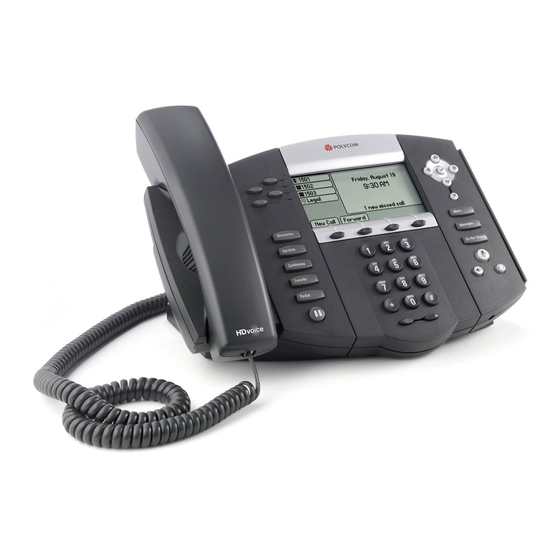
Polycom soundpoint IP series Manuals
Manuals and User Guides for Polycom soundpoint IP series. We have 9 Polycom soundpoint IP series manuals available for free PDF download: Administrator's Manual, Manual, Developer's Manual, Quick Start Manual, Quick Reference Manual
Polycom soundpoint IP series Administrator's Manual (347 pages)
SIP 3.1
Brand: Polycom
|
Category: Conference System
|
Size: 5 MB
Table of Contents
Advertisement
Polycom soundpoint IP series Administrator's Manual (288 pages)
SIP 3.0.2
Brand: Polycom
|
Category: Conference System
|
Size: 4 MB
Table of Contents
Polycom soundpoint IP series Manual (256 pages)
SIP 2.2.2
Brand: Polycom
|
Category: Conference System
|
Size: 4 MB
Table of Contents
Advertisement
Polycom soundpoint IP series Administrator's Manual (254 pages)
SIP 2.2.0
Brand: Polycom
|
Category: Conference System
|
Size: 3 MB
Table of Contents
Polycom soundpoint IP series Developer's Manual (36 pages)
SIP 2.2.0 Web Application
Brand: Polycom
|
Category: Conference System
|
Size: 0 MB
Table of Contents
Polycom soundpoint IP series Quick Start Manual (8 pages)
Cisco Manual Reconfiguration Procedure
Table of Contents
Advertisement
Related Products
- Polycom SoundPoint IP
- Polycom SoundPoint IP 501 SoundPoint IP 550
- Polycom SoundPoint IP 501 SIP 2.2
- Polycom SoundStation Premier
- Polycom SoundStructure Systems
- Polycom SoundStation2 EX, FX, VS4000
- Polycom SoundStation IP Family
- Polycom SoundStation IP Series
- Polycom SoundStructure SR12
- Polycom SIP 3.1








